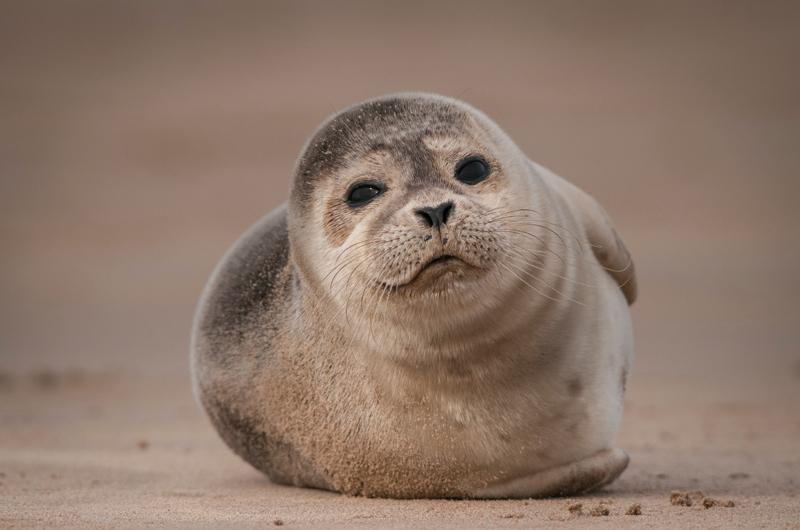
The off-season may be quiet on the Cape and Islands, but it is a busy time for the area’s gray seals – and thus for scientists studying them. Armed with drones and flipper tags, researchers from the National Oceanic and Atmospheric Administration (NOAA) and a variety of other organizations are working on Muskeget and Monomoy Islands to collect information about gray seal pups in hopes of gathering a census of seals and learning more about the species’ health.
Gray seals are year-round residents of coastal waters around Cape Cod and the Islands, where they feed on fish, crustaceans, and squid, and grow to between 550 and 880 pounds. Hunted nearly to extinction before the passage of the Marine Mammal Protection Act of 1972, they now gather in large groups to mate at the more remote islands in the region. Muskeget, a small, privately owned island at the southern entrance to Nantucket Sound, hosts the largest gray seal breeding and pupping colony in the U.S. In 1988, the year the colony was reestablished there, just five pups were born; twenty years later more than 2,000 pups were counted. Likewise, Monomoy Island, off Chatham at the eastern entrance to the Sound, is a popular seal hang-out.
Pupping season in the western Atlantic takes place from mid-December to February. Pups are born white and grow quickly, as much as three pounds a day. After three weeks they take on the mottled gray color of adult seals. During this time, manned and unmanned aircraft will gather information about adult seals, the number of pups, and pup distribution. The NOAA Twin Otter aircraft will conduct aerial surveys from two camera angles, and drones from NOAA and Duke University will take images of the seals at altitudes of up to four hundred feet.
Back on land, scientists will gather more information from the seal pups themselves, including data about the animals’ health. On Monomoy, researchers from MIT are conducting a long-term study of influenza A, which can cause nasal discharge, skin lesions, pneumonia, and secondary infections in seals. Other marine mammals, including harbor seals and harp seals, as well as California sea lions, beluga whales, and pilots whales, have shown exposure to influenza A viruses. There’s a possibility, though remote, it could spread to humans and other land mammals.
This year, scientists hope to study 100 to 150 weaned seals. Each pup will be measured and weighed, and blood, mucous, hair, and skin samples taken for health assessments and genetic research. The seals will be given numbered identification tags and then released, the whole process lasting about twenty minutes. Scientists will also re-sample some seals tagged in previous years to study how diseases progress and are transmitted.
Meanwhile, research on another common local pinniped, the harbor seal, is helping to inform undersea navigation. According to scientists with the Woods Hole Oceanographic Institution (WHOI), harbor seals use their whiskers to help them locate their prey. According to research published in the Journal of Fluid Mechanics by Heather Beem, a scientist with WHOI and MIT, seals’ whiskers are sensitive enough to discern changes in the water caused by their prey swimming nearby.
Almost unbelievably, the seals are able to track vortex wakes and detect the location of an animal that swam by thirty seconds earlier. Beem is hopeful that sensors based on the harbor seals’ whiskers could improve the navigation capability of undersea vehicles.




